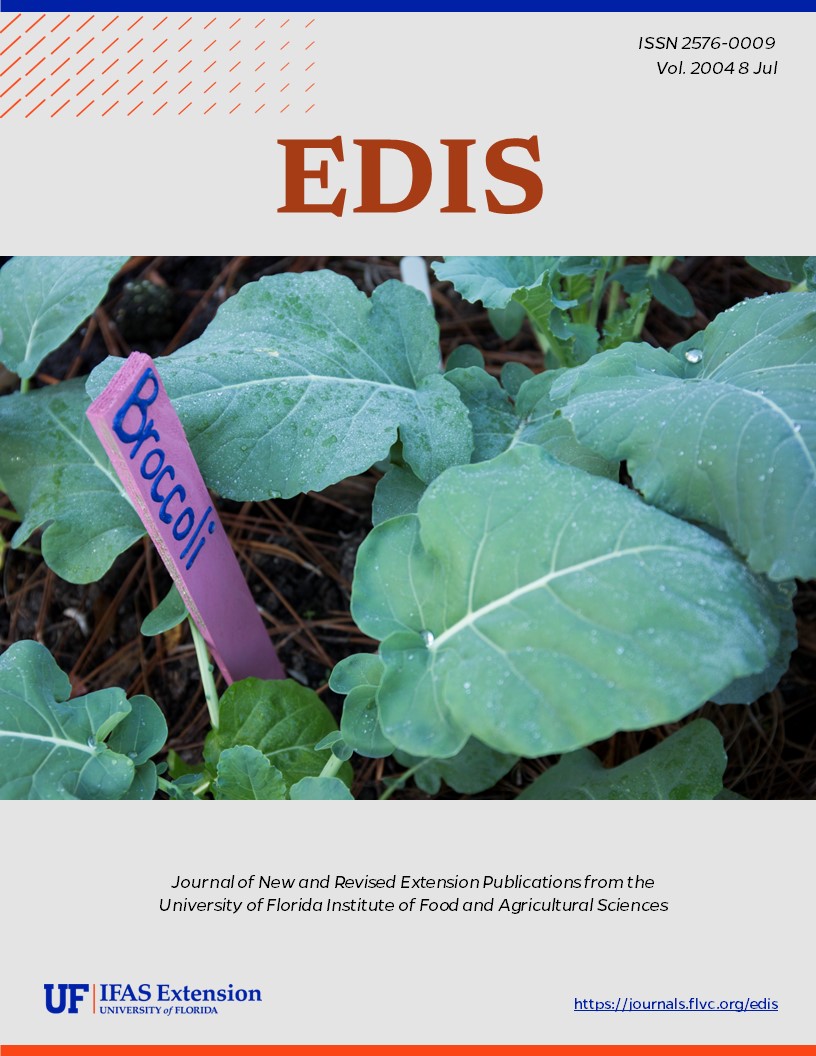Abstract
A checklist of birds observed in the Everglades Agricultural Area. This checklist was developed through studies funded by the Everglades Protection District and the University of Florida, IFAS. November 2003.
Circular 1444/UW179: Checklist of Birds of the Everglades Agricultural Area (ufl.edu)
References
Bancroft, C.T. 1989. Status and conservation of wading birds in the Everglades. American Birds 43:1258-1265.
Best, Louis B., R.C. Whitmore, and G.M. Booth. 1990. Use of cornfields by birds during the breeding season: The importance of edge habitat. American Midlands Naturalist 124 (1990): 84-99. https://doi.org/10.2307/2425762
Dahl, T.E. and C.E. Johnson, 1991. Status and Trends of Wetlands in the Conterminous United States, Mid-1970's to Mid-1980's. U.S. Department of the Interior, Fish and Wildlife Service, Washington, D.C. 28 pages.
Davis, S.M. and J.C. Ogden. 1994. Introduction. Pages 3-8 in Everglades: The Ecosystem and its Restoration. (S.M. Davis, J.C. Ogden Eds.) St. Lucie Press, Delray Beach, Florida. https://doi.org/10.1201/9781466571754
Frederick, P.C. 1993. Wading bird nesting success studies in the WCAs of the Everglades. Final Report to the South Florida Water Management District, West Palm Beach, Florida.
Freemark K. and C. Boutin, 1995. Impacts of agricultural herbicide use on terrestrial wildlife in temperate land scapes: A review with special reference to North America. Agricuture, Ecosystems and Enviroment 52(2,3): 67-91. https://doi.org/10.1016/0167-8809(94)00534-L
Fujioka, Masahiro, James W. Armacost, Jr., Hoshiko Yoshida and Taku Maeda, 2001. Value of fallow farmlands as summer habitats for waterbirds in a Japanese rural area. Ecological Research 16:555-567. https://doi.org/10.1046/j.1440-1703.2001.00417.x
Hefner, J.M., B.O. Wilen, T.E. Dahl and W.E. Frayer. 1994. Southeast Wetlands; Status and Trends, Mid-1970's to Mid-1980's, U.S. Department of the Interior, Fish and Wildlife Service, Atlanta, Georgia, 32 pages.
Kushlan, J.A., and D.A. White. 1977. Nesting wading bird populations in southern Florida. Florida Scientist 40:65-72.
Kushlan, J.A., and H. Hafner eds. 2000. Heron Conservation. Academic Press, San Diego, CA.
Lane, S.J. and M. Fujioka. 1998. The impact of changes in irrigation practices on the distribution of foraging egrets and herons (Ardeidae) in the rice fields of central Japan. Biological Conservation 83:221-230. https://doi.org/10.1016/S0006-3207(97)00054-2
Maeda, T. 2001. Patterns of bird abundance and habitat use in rice fields of the Kanto Plain, central Japan. Ecological Research 16:569-585. https://doi.org/10.1046/j.1440-1703.2001.00418.x
Rottenborn, S.C. 1996. The use of coastal agricultural fields in Virginia as foraging habitat by shorebirds. Wilson Bulletin 108:783-796.
Sprott, P. and F. Mazzotti, 2001. Habitat Loss, Florida's Changing Landscapes: Upland Forests. WEC 151, Department of Wildlife and Ecology Conservation, Institute of Food and Agricultural Sciences, University of Florida.
Sykes, P.W., Jr. and G.S. Hunter. 1978. Bird use of flooded agricultural fields during summer and early fall and some recommendations for management. Florida Field Naturalist. 6:37-43.
Tourenq, Christophe, Robert E. Bennetts, Hubert Kowalski, Emmanuel Vialet, Jean-Laurent Lucchesi, Yves Kayser and Paul Isenmann, 2001. Are ricefields a good alternative to natural marshes for waterbird communities in the Camargue, southern France? Biological Conservation 100(2001):335-343. https://doi.org/10.1016/S0006-3207(01)00037-4
Townsend, S.E. 2000. Waterbirds in rice fields of the Everglades Agricultural Area. Unpublished Master's Thesis, University of Florida, Gainesville, FL.
Twedt, D.J. and C.O. Nelms. 1999. Waterfowl density on agricultural fields managed to retain water in winter. Wildlife Society Bulletin, 27(4):924-930.
Vandermeer, J. and I. Perfecto. 1997. The agroecosystem: A need for the conservation biologist's lens. Conserva tion Biology 11: 591-592. https://doi.org/10.1046/j.1523-1739.1997.07043.x
Unless otherwise specified, articles published in the EDIS journal after January 1, 2024 are licensed under a Creative Commons Attribution-NonCommercial-NoDerivs 4.0 International (CC BY-NC-ND 4.0) license.

